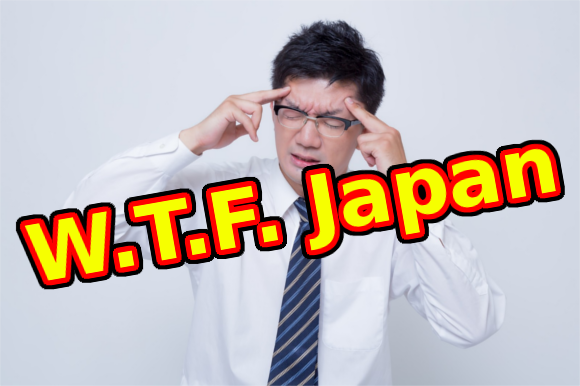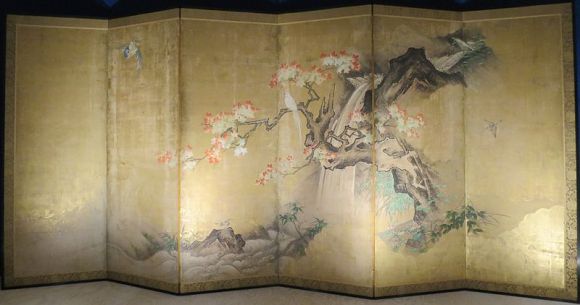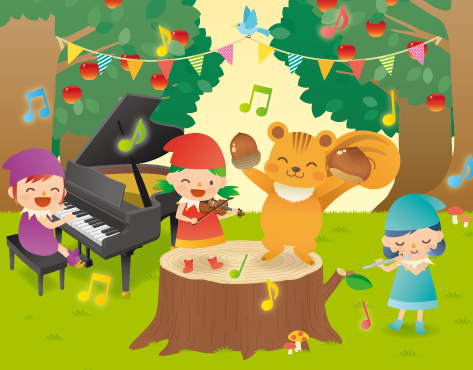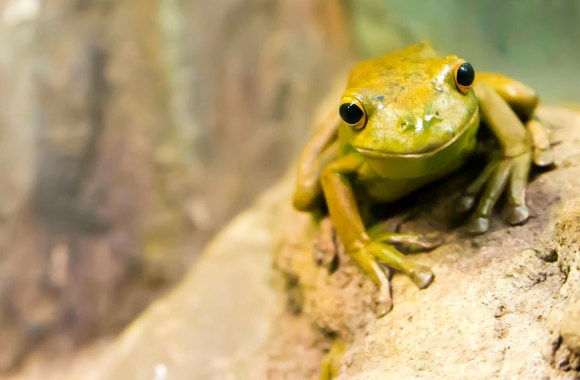
Even if you don’t speak Japanese, that might be to your advantage.
In Japanese the word for “tongue twister” is hayakuchi kotoba, literally “fast mouth words.” I like how the Japanese version of the word gets right to the point – no one cares if you can just say these mouth monstrosities, they care whether or not you can say them fast.
And even if you don’t speak any Japanese, that doesn’t mean you can’t try out some foreign language tongue twisters for yourself! After all, the whole point of hayakuchi kotoba isn’t to understand what they mean (they barely make any sense as it is), it’s just to say them as fast as you can.
That’s why today we’re counting down the top five most difficult Japanese tongue twisters. We’ve scoured the Japanese internet and asked around, and these five are the ones that come up the most often. We’ve also included a video with each one showing someone attempting the tongue twister so you can have someone to practice with.
So let’s get to it! Starting off with…
Honorable Mention: Raw stuff
The first tongue twister on our list is an honorable mention due to how overused it is. If you were to ask a Japanese person to give you a tongue twister, chances are this one would be their go-to example a lot of the time.
And now you can try it out for yourself. Here it is along with a translation below.
The tongue twister:
Nama mugi, nama gome, nama tamago.Translation:
“Raw buckwheat, raw rice, raw egg.”
Hey, as far as translations go, this one’s pretty high up on the “that makes sense” meter compared to some others on this list.
As for the twister itself, it’s not too hard to say. The repetition of the “m” sound over and over can make you stumble if you’re not careful, but you’ll probably be saying this one three times fast in no time.
▼ Listen to a native Japanese speaker say it here. She does it along to a rhythm,
as well as a plethora of other tongue twisters, some of which we’ll see later.
#5. An artistic monk
Next up is another popular hayakuchi kotoba all about monks painting screens like the one in the picture above. Let’s take a look.
The tongue twister:
Bōzu ga byōbu ni jōzu ni bōzu no e wo kaita.Translation:
“The monk drew a picture of a monk well on the folding screen”
Why the monk is drawing a picture of a monk, presumably himself, is a question lost to the ages. Instead, all we have passed down to us is this tongue twister, which puts “raw buckwheat and eggs” to shame.
I personally have trouble by about the fifth word in. All of those long “o” sounds are like giant holes just waiting for me to fall into. Though when I do manage to say it correctly (very, very slowly of course) that “e wo kaita” at the end which is so different from the rest comes in like a refreshing breeze.
▼ Listen to some Japanese YouTubers struggle with this one.
They seem pretty confident at first, but then it all falls apart.
#4. Peeking on persimmon purchasers
For those unfamiliar, persimmons are one of the most popular winter foods in Japan, and for good reason – they’re delicious! They look sort of like a tomato, but they’re sweet and soft with a honeyish flavor like dates.
Persimmons are kaki in Japanese, and the double “k” sound already lends itself to some tongue twister action. Here’s the tongue-twisting sentence in its full mouthful:
The tongue twister:
Tonari no kyaku wa yoku kaki kuu kyaku da.Translation:
“The customer next to me is a customer that often eats persimmons.”
Oh god, all of those “k” sounds! And then mixed with the “y” sound it all comes out as a garbled mess, like the squishy inside of a persimmon but far less tasty.
Peter Piper can pick pecks of pickled peppers all day… it’s the persimmons that are the real tongue killers.
▼ YouTuber Texan In Tokyo attempts this tongue twister when her
Japanese husband gives it to her… after she critiques his handwriting.
#3. New Year chanson show
For me, the tongue twister I’ve always had the most trouble with in English is “she sells seashells by the seashore.” I can barely say it when I’m speaking at a snail’s pace, and even then all those “s” and “sh” sounds contort my mouth and teeth in ways that make me look like a braying horse.
And it seems that Japanese has a similarly “s” sound-filled tongue twister. Here it is:
The tongue twister:
Shinshun shanson shō.Translation:
“New Year’s chanson (‘song’) show.”
Shanson is a word borrowed from French, and shō is a word borrowed from English, making this a very multilingual tongue twister.
Maybe that’s why it’s so hard? It’s only three words long, but I can’t even get past the third syllable.
If you’ve somehow managed to conquer this one, there is a more advanced version waiting for you:
The tongue twister:
Shinjin kashu shinshun shanson shō.Translation:
“The new singer’s New Year’s chanson (‘song’) show.”
Oh geez. My poor tongue. Is it possible for it to twist right out of your mouth?
▼ A native Japanese woman attempts this
tongue twister with quite a bit of difficulty.
#2. Uh, lots of frog jumping
I’ve never really had a problem with the “woodchuck” tongue twister in English (“how much wood could a woodchuck chuck”). There’s so many different sounds that even the repeated “w” and “ch” sounds aren’t too bad.
Frogs though? They’re on a whole other level.
This one looks deceptively easy at first, but once you start trying to say it out loud, the reason it’s so difficult quickly becomes apparent.
The tongue twister:
Kaeru pyoko-pyoko mi pyoko-pyoko awasete pyoko-pyoko mu pyoko-pyoko.Translation:
“The frogs jump, three (times) jump, together jump, six (times) jump.”
If you’re anything like me, you rattled off the first half of the twister, but then everything fell apart after awasete. And if you did manage to say it all, try it again but a little faster. It’s hard to get all those “pyo” sounds out without it turning into a garbled mess.
▼ YouTuber Sharla in Japan and her friend attempt this one.
Do they manage to take it down, or is tongue on the menu tonight?
And the #1 most difficult Japanese tongue twister is…
.
.
.
.
.
.
.
.
.
.
1. The boss tongue twister… literally
This one’s a real doozy. It combines the difficult “k” and “ky” sounds from the persimmon tongue twister, the long “o” sounds from the monk tongue twister, and contorts your mouth all over the place like the New Year’s show one.
I have personally never said this one correctly, even when going far slower than is even remotely reasonable. See if you can do better than me:
The tongue twister:
Tōkyō tokkyo kyokakyoku kyokuchō.Translation:
“The Tokyo patent authorization bureau boss.”
Whenever I finish reading that one (and messing up somewhere of course), I feel like I’m floating in a hazy soup of syllables. I’m aware of the fact that sounds came out of my mouth, but they feel devoid of any meaning except tongue twister failure.
If you somehow managed to take this one down, then good news, because there’s an even more difficult version awaiting you!
The tongue twister:
Tōkyō tokkyo kyokakyoku kyokuchō kyō kyūkyo kyoka kyakkaTranslation:
“The Tokyo patent authorization bureau boss today quickly denied authorization.”
I enjoy having a tongue to taste things with, so I’m not even going to attempt that one. Instead I’ll just leave you with this video of some souls far braver and skilled at speaking than I am.
▼ YouTuber mimei attempts this one and her friend Mahoto
shares a tip on how to make it a little easier to say.
So there you have it, the top five most difficult Japanese tongue twisters. What tongue twisters are the most difficult for you? It doesn’t matter the language, just let us know in the comments, and like we learned last week with the top five strangest Japanese home goods, the stranger it is, the better too.
Top image: PAKUTASO (edited by RocketNews24)
W.T.F. Japan will be back next Thursday. In the meantime, give me a follow on Twitter and let me know if there’s any topics you’d like to see covered. See you next week!







 W.T.F. Japan: Top 5 offbeat Japanese animal cafes【Weird Top Five】
W.T.F. Japan: Top 5 offbeat Japanese animal cafes【Weird Top Five】 Volcano Spawns Terrifying Tornado-Like Twisters【GIFS】
Volcano Spawns Terrifying Tornado-Like Twisters【GIFS】 Pepsi Japan to release its “most refreshing” cola ever
Pepsi Japan to release its “most refreshing” cola ever W.T.F. Japan: Top 5 most difficult kanji ever【Weird Top Five】
W.T.F. Japan: Top 5 most difficult kanji ever【Weird Top Five】 McDonald’s Japan celebrates Happy Meal 30th anniversary with awesome travel-size board games
McDonald’s Japan celebrates Happy Meal 30th anniversary with awesome travel-size board games Japanese ramen restaurants under pressure from new yen banknotes
Japanese ramen restaurants under pressure from new yen banknotes McDonald’s new Happy Meals offer up cute and practical Sanrio lifestyle goods
McDonald’s new Happy Meals offer up cute and practical Sanrio lifestyle goods French Fries Bread in Tokyo’s Shibuya becomes a hit on social media
French Fries Bread in Tokyo’s Shibuya becomes a hit on social media Mt. Koya planning to instate visitor’s tax to cope with huge tourist numbers
Mt. Koya planning to instate visitor’s tax to cope with huge tourist numbers Secret Kitchen bento serves Japanese flowers, birds, wind and moon in a box, but is it worth it?
Secret Kitchen bento serves Japanese flowers, birds, wind and moon in a box, but is it worth it? New private rooms on Tokaido Shinkansen change the way we travel from Tokyo to Kyoto
New private rooms on Tokaido Shinkansen change the way we travel from Tokyo to Kyoto Studio Ghibli releases new action figures featuring Nausicaä of the Valley of the Wind characters
Studio Ghibli releases new action figures featuring Nausicaä of the Valley of the Wind characters Tokyo Tsukiji fish market site to be redeveloped with 50,000-seat stadium, hotel, shopping center
Tokyo Tsukiji fish market site to be redeveloped with 50,000-seat stadium, hotel, shopping center Beautiful Red and Blue Star luxury trains set to be Japan’s new Hokkaido travel stars
Beautiful Red and Blue Star luxury trains set to be Japan’s new Hokkaido travel stars We tried Korea’s way-too-big King Tonkatsu Burger at Lotteria 【Taste Test】
We tried Korea’s way-too-big King Tonkatsu Burger at Lotteria 【Taste Test】 All-you-can-drink Starbucks and amazing views part of Tokyo’s new 170 meter-high sky lounge
All-you-can-drink Starbucks and amazing views part of Tokyo’s new 170 meter-high sky lounge More foreign tourists than ever before in history visited Japan last month
More foreign tourists than ever before in history visited Japan last month Starbucks reopens at Shibuya Scramble Crossing with new look and design concept
Starbucks reopens at Shibuya Scramble Crossing with new look and design concept Studio Ghibli glasses cases let anime characters keep an eye on your spectacles
Studio Ghibli glasses cases let anime characters keep an eye on your spectacles Is the new Shinkansen Train Desk ticket worth it?
Is the new Shinkansen Train Desk ticket worth it? Beautiful Ghibli sealing wax kits let you create accessories and elegant letter decorations【Pics】
Beautiful Ghibli sealing wax kits let you create accessories and elegant letter decorations【Pics】 Studio Ghibli releases Kiki’s Delivery Service chocolate cake pouches in Japan
Studio Ghibli releases Kiki’s Delivery Service chocolate cake pouches in Japan New definition of “Japanese whiskey” goes into effect to prevent fakes from fooling overseas buyers
New definition of “Japanese whiskey” goes into effect to prevent fakes from fooling overseas buyers Our Japanese reporter visits Costco in the U.S., finds super American and very Japanese things
Our Japanese reporter visits Costco in the U.S., finds super American and very Japanese things Studio Ghibli unveils Mother’s Day gift set that captures the love in My Neighbour Totoro
Studio Ghibli unveils Mother’s Day gift set that captures the love in My Neighbour Totoro Domino’s Japan now sells…pizza ears?
Domino’s Japan now sells…pizza ears? New Japanese KitKat flavour stars Sanrio characters, including Hello Kitty
New Japanese KitKat flavour stars Sanrio characters, including Hello Kitty New Pokémon cakes let you eat your way through Pikachu and all the Eevee evolutions
New Pokémon cakes let you eat your way through Pikachu and all the Eevee evolutions Sales of Japan’s most convenient train ticket/shopping payment cards suspended indefinitely
Sales of Japan’s most convenient train ticket/shopping payment cards suspended indefinitely Sold-out Studio Ghibli desktop humidifiers are back so Totoro can help you through the dry season
Sold-out Studio Ghibli desktop humidifiers are back so Totoro can help you through the dry season Japanese government to make first change to romanization spelling rules since the 1950s
Japanese government to make first change to romanization spelling rules since the 1950s Ghibli founders Toshio Suzuki and Hayao Miyazaki contribute to Japanese whisky Totoro label design
Ghibli founders Toshio Suzuki and Hayao Miyazaki contribute to Japanese whisky Totoro label design Doraemon found buried at sea as scene from 1993 anime becomes real life【Photos】
Doraemon found buried at sea as scene from 1993 anime becomes real life【Photos】 Tokyo’s most famous Starbucks is closed
Tokyo’s most famous Starbucks is closed One Piece characters’ nationalities revealed, but fans have mixed opinions
One Piece characters’ nationalities revealed, but fans have mixed opinions We asked a Uniqlo employee what four things we should buy and their suggestions didn’t disappoint
We asked a Uniqlo employee what four things we should buy and their suggestions didn’t disappoint Princesses, fruits, and blacksmiths: Study reveals the 30 most unusual family names in Japan
Princesses, fruits, and blacksmiths: Study reveals the 30 most unusual family names in Japan Shiso and cherry blossom flavored gin now on sale in Japan
Shiso and cherry blossom flavored gin now on sale in Japan Hilarious frog fail sees insect escape certain death
Hilarious frog fail sees insect escape certain death Takoyaki makers surprisingly good at grilling meat for yakiniku too
Takoyaki makers surprisingly good at grilling meat for yakiniku too Random beef tongue vending machine in Tokyo lets us test our luck, fill our bellies【Taste test】
Random beef tongue vending machine in Tokyo lets us test our luck, fill our bellies【Taste test】 The top 10 hardest Japanese words to pronounce – which ones trip you up?【Video】
The top 10 hardest Japanese words to pronounce – which ones trip you up?【Video】 Taste-testing Japan’s beef tongue/gacha beef vending machine in Sendai【Taste test】
Taste-testing Japan’s beef tongue/gacha beef vending machine in Sendai【Taste test】 Japanese elementary school student teaches us all how to pronounce English like a native speaker
Japanese elementary school student teaches us all how to pronounce English like a native speaker Yes, Mountain Dew flavoured corn chips are a thing in Japan – and they taste…
Yes, Mountain Dew flavoured corn chips are a thing in Japan – and they taste… Struggling to prep the perfect rice for sushi? We have the answer!
Struggling to prep the perfect rice for sushi? We have the answer! Top 10 food disasters prepared by Japanese wives who have extraordinary talent in the kitchen
Top 10 food disasters prepared by Japanese wives who have extraordinary talent in the kitchen Seven mistakes foreigners make when speaking Japanese—and how to fix them
Seven mistakes foreigners make when speaking Japanese—and how to fix them New frozen snacks promise to make you come out smelling like a rose
New frozen snacks promise to make you come out smelling like a rose The science behind why English speakers can’t pronounce the Japanese “fu”
The science behind why English speakers can’t pronounce the Japanese “fu” Huge anime character balloon terrifies all it encounters, gives viewers a literal tongue lashing
Huge anime character balloon terrifies all it encounters, gives viewers a literal tongue lashing A visit to Japan’s cat beautiful, quirky, and touching cat temple, Unrinji【Photos】
A visit to Japan’s cat beautiful, quirky, and touching cat temple, Unrinji【Photos】 Indonesian street mascots are nothing like we’ve seen in Japan, may also lick you 【Video】
Indonesian street mascots are nothing like we’ve seen in Japan, may also lick you 【Video】
Leave a Reply